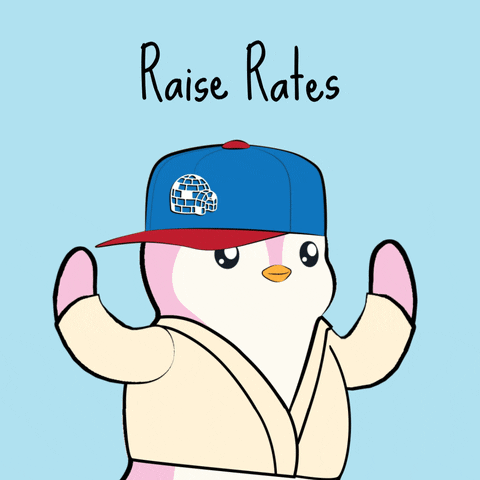Key Takeaways
BOJ Governor Kazuo Ueda signaled that rate hikes may accelerate if inflation extends beyond food and energy.
Japan’s bond yields hit a 16-year high, reinforcing expectations for further tightening.
Global risks, including potential U.S. tariffs on Japan’s auto industry, could complicate the BOJ’s tightening path.
Is Japan Finally Breaking Free From Ultra-Low Rates?
For decades, the Bank of Japan (BOJ) has been the outlier among major central banks, keeping rates at near-zero while others hiked to combat inflation. But with Japan’s core inflation surpassing the BOJ’s 2% target for nearly three years, that era could be coming to an end.
BOJ Governor Kazuo Ueda has made it clear: If inflation continues broadening beyond food and energy, rate hikes will continue.
But will Japan’s tightening cycle be measured or aggressive? And how will it impact forex markets, bond yields, and global trade?
Why Is the BOJ Still Cautious?
Despite February’s 3.0% core inflation reading, the BOJ remains hesitant to commit to aggressive tightening. Why?
Inflation Is Still Largely Food-Driven
Recent price increases are tied primarily to higher food costs and import prices.
BOJ’s concern: If inflation is only driven by food prices, it might not justify further rate hikes.
Underlying Inflation Is Still Uncertain
The BOJ focuses on long-term inflation trends, stripping out temporary factors.
Ueda recently stated that underlying inflation remains “just a bit” below 2%, meaning rate hikes could be slower than markets expect.
The Wage Growth Factor: BOJ’s Key Trigger for Future Rate Hikes
Japan has long struggled with stagnant wages. The BOJ has repeatedly emphasized that sustained wage growth is critical before committing to further rate hikes.
Current Wage Growth Trends
April 2025: Japan’s largest labor unions secured a 5.46% wage increase, the highest in over three decades.
Service-sector wages are gradually translating into higher consumer prices.
Smaller firms recorded 5% wage growth for the first time since 1992.
Why This Matters: If wage gains continue spreading, the BOJ will have no choice but to hike rates again.
Global Risks: How U.S. Tariffs Could Disrupt BOJ’s Plans
One major wild card in Japan’s monetary policy is U.S. trade policy.
With the possibility of new U.S. tariffs targeting Japan’s auto exports, Japan’s trade-reliant economy could face fresh headwinds.
Potential Impact on BOJ’s Policy
Higher U.S. tariffs on Japanese autos could hurt Japan’s GDP growth, forcing the BOJ to slow down rate hikes.
If exports shrink significantly, Japan’s corporate profits could decline, making it harder for companies to justify higher wages.
BOJ’s Past Tightening Cycles
Looking at past BOJ rate hikes can provide insight into how the yen, bond yields, and stocks might react.
The 2006 BOJ Rate Hike
What happened? The BOJ raised rates from 0% to 0.25%, its first hike since 2000.
Market reaction: The yen initially strengthened, but weak wage growth forced the BOJ to pause further hikes.
Takeaway: If wage growth isn’t sustained this time, history could repeat itself.
The 2018 Fed Rate Hike vs. BOJ’s Zero-Rate Policy

What happened? The Fed aggressively raised rates, while the BOJ kept rates ultra-low.
Market reaction: USD/JPY surged, as interest rate differentials made the dollar stronger and the yen weaker.
Takeaway: If the BOJ raises rates while the Fed cuts, JPY could rally sharply.
Bond Yields Are Flashing Warning Signs
Even as the BOJ remains cautious, Japan’s bond market is signaling a different story.
March 26, 2025: Japan’s 10-year government bond yield hit 1.585%, the highest level since 2008.
What This Means: Investors are betting on further BOJ rate hikes, whether the central bank is ready or not.
Trading Implications: How to Position for BOJ’s Next Move
Given these developments, be prepared for various BOJ policy scenarios. Here’s how each outcome could impact the markets:
Scenario 1: Gradual Rate Hikes (Most Likely)
Condition: Inflation broadens beyond food and energy.
BOJ Action: Raise rates to 0.75% by mid-2025, keeping a cautious stance.
Impact: JPY strengthens, but economic growth remains stable.
Possible Trade Setup: Long JPY vs. USD/EUR on dips as rate hikes support yen appreciation.
Scenario 2: Aggressive Tightening (Less Likely)
Condition: Wages and service-sector inflation accelerate beyond BOJ forecasts.
BOJ Action: Hike rates above 1.0% faster than expected.
Impact: JPY surges, carry trades unwind, Japanese stocks correct.
Possible Trade Setup: Short USD/JPY, as rapid rate hikes fuel yen strength.
Scenario 3: BOJ Pauses (Low Probability, but a Risk)
Condition: U.S. tariffs weaken exports, slowing Japan’s GDP growth.
BOJ Action: Holds rates at 0.5% or delays further hikes.
Impact: JPY weakens, while stocks recover.
Possible Trade Setup: Long USD/JPY, as a weaker yen boosts Japan’s exporters.
Final Thoughts: Is Japan Finally Breaking Free From Zero Rates?

Photo: kim kyung-hoon/Reuters
The BOJ is at a crossroads.
While inflation has exceeded 2% for nearly three years, underlying price growth remains uncertain. Meanwhile, Japan’s bond market is signaling rate hikes, and global risks like U.S. tariffs could complicate policy decisions.
These are the events traders’ should watch closely for:
BOJ’s April 30-May 1 policy decision.
Bond yield movements for clues on future rate hikes.
Global trade developments—U.S. tariffs could shift Japan’s entire economic outlook.
The next few months could define Japan’s monetary future, and for traders, opportunities abound.



